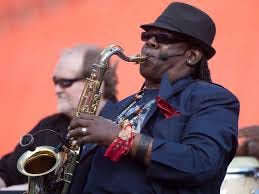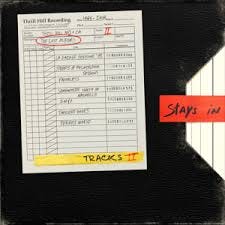“Bruce would write five songs to get one.”
The quote comes from years back, from the mighty Big Man of rock and roll saxophone, the late great Clarence Clemons. He’d been present at the creation of Bruce Springsteen’s iconic early albums and knew, exactly and intimately, what went into them.
Springsteen himself has elaborated on this further in countless interviews. “If something wasn’t complete I just pulled out the parts I liked, like taking the parts you need from one car and you put it in the other car so that car runs.”
This plus plain-old effort is the grimy labor of writing songs, something Bruce Springsteen has done with remarkable consistency for decades. The effort part has been part of the Springsteen mythos since the ‘80s, right along with his routine walks up to the nosebleed sections of arenas to make sure the sound was representative.
Tracks II: The Lost Albums, a 7-LP set of mostly shelved music Springsteen released last month, is an exhaustive chronicle of that labor. He saved the timecards, the false starts, the junkyard songs, the receipts. Proof of work.
And he’s arranged (let’s please not call it “curation”) the fruits of that labor into album-length experiences with narrative arcs and thematic or sonic connections, adhering to the old (possibly quaint) notion that the context of the creation matters.
Six of the seven titles relate to specific periods in Springsteen’s writing life, when he was exploring specific notions of tone and texture, density and desolate space. When he was chasing songs that breathed on a more human scale than his default stadium shouts – or, conversely, was in pursuit of the song that could be his next fists-in-the-air flagwaver. Or protest anthem: When Springsteen and Pittsburgh rocker Joe Grushecky collaborated years ago on songs that turn up on Vol. 7, the blithe bar-band romp Perfect World, neither could have anticipated that their refrain would neatly sum up the surreal socio-political moment now unfolding in 2025 America.
But here it is:
The jackals leave here laughing as they slip into the night –
How did something so beautiful turn into an idiot’s delight?
Some of the material, like this wistful jazz waltz that opens Twilight Hours, is radically different from music Springsteen has shared in the past. Some of it lands as pure writer-getting-unstuck boilerplate. Some of it retraces familiar Woody Guthrie song structures and some of it, not surprisingly, raids Springsteen’s own hit records for spare-parts inspiration.
One overarching theme is loneliness – nobody does sad-boy soul-mining quite like Springsteen. Among the striking songs he held back are essays about drifters who find themselves on extended streaks of bad luck, then momentarily redeemed by a job (or a woman). Written from the outsider perspective, they explore what it means to be lonely in this polarized, suspicious, quick-to-judge moment in America. And if those emotion-terrain renderings are not specific enough, there’s an entire album looking at the lives and hopes and sorrows of migrants in California. Poignant, carefully drawn songs like “Cuidad Juarez” contrast bright mariachi horns with the foreboding tones of murder ballads; they can be heard as nuanced, artful counterpoint to the cruelty of ICE enforcement actions.
Still, to scorecard this set is to miss the point: Tracks II is best appreciated as an extended meditation on the creative process. By lifting the curtain in this sustained and multi-faceted way, Springsteen shows his audience – and, not incidentally, anyone who creates art -- what it means to stretch, experiment, fail. What can happen if, as a writer, you cling too tightly to an established approach or sound, or abstract ideal that exists primarily in your head.
Springsteen makes this point by showing what his songs can sound like when the stretch isn’t fully realized. In the liner notes, he confides that the austere Volume 2, The Streets of Philadelphia Sessions, “never felt finished to me.” That’s audible: Though this music, from 1983, continues the hollow haunted aura of Nebraska, the stories don’t always feel connected to the sonic atmospheres. Watch out when they do link up, however: “Blind Spot” speaks bluntly, in that confessional way that Springsteen owns, about self-deception and disillusionment; he’s talking in universal terms about something it sounds like he knows from experience.
The sheer volume of material means there’s lots of everything – roads not taken and escape routes followed maybe too often, examples of delirious out-of-nowhere inspiration and other examples of boot-and-shovel effort, moments that portray Springsteen as an observant student of genre convention and other moments where he dives headlong into a classic E Street stomp to immortalize a Repo Man, or a Detail Man, or a Delivery Man. You could almost make a drinking game out of the recurring lyrical conceits – around any reference to a character putting on his jacket (or taking it off), getting thirsty (!), or sliding behind the wheel for a solo nighttime ride.
**
The section of the recent New York Times Springsteen profile that most intrigued me was about Twilight Hours, the noirish set of studio-sculpted pop songs Springsteen wrote, and set aside, during the making of Under Western Skies in 2019. Recalling the writing, he jokes in the interview about using musical devices that he’d avoided in the past: “‘Twilight Hours’ is filled with modulations, transitions, major 7th chords, a lot of musical types of things that I’d never used before. It was fun writing in basically your classic American songbook genre and seeing what I came up with.”
Twilight Hours is indeed fun, and wildly inspired, and gorgeously decked out, but it’s hardly Springsteen’s first use of those elements. There are elaborate instrumental transition passages that knit together various sections of "Born To Run” and “Thunder Road,” and unprepared modulations similar to the one on “Sunday Love” throughout Springsteen’s totemic first three albums.
Their presence here magnifies the great wide turn Springsteen took as a songwriter somewhere around Darkness On the Edge of Town in 1978. Within a span of a few years, he’d abandoned the epic suite-like compositions (“Rosalita,” “Jungleland”) that incorporated multiple grooves and melodies, and moved toward structurally tighter, more conventionally declarative songwriting. (“Hungry Heart,” from 1980). He became a verse/chorus/hook creature, an expert resourcer of vintage pop and R&B templates and creator of his own similar templates.
Tracks II chronicles the ways Springsteen has worked — yes, worked, in his usual diligent and methodical way — with and against the rigidity of pop song form. Running throughout the sullen drone experiments of the Streets of Philadelphia Sessions and the blithe, incandescent songs of Twilight Hours is the sound of an artist pushing himself beyond what worked in the past. And willing, forcing, prodding himself to find a constellation of tones and images and breaths that adds up to something irrefutably new.
Sometimes Springsteen finds it by leaping off a cliff, sometimes he finds it in the subtle grace notes of craft. The much-beloved records show where he landed; the Tracks II motherlode suggests some of the ways he got there.







Thanks....yeah def some major chords in the rubato section of jungleland!
Thanks for writing this, Tom. A wise and generous appraisal. I've been waiting since you asked the question of how to approach the mass of music a few weeks ago. For me it's still like summer school homework that I don't have time for. I was also struck by Bruce mentioning the A7 in Pareles' Times interview, and Little Steven saying something like, "we never play that!"